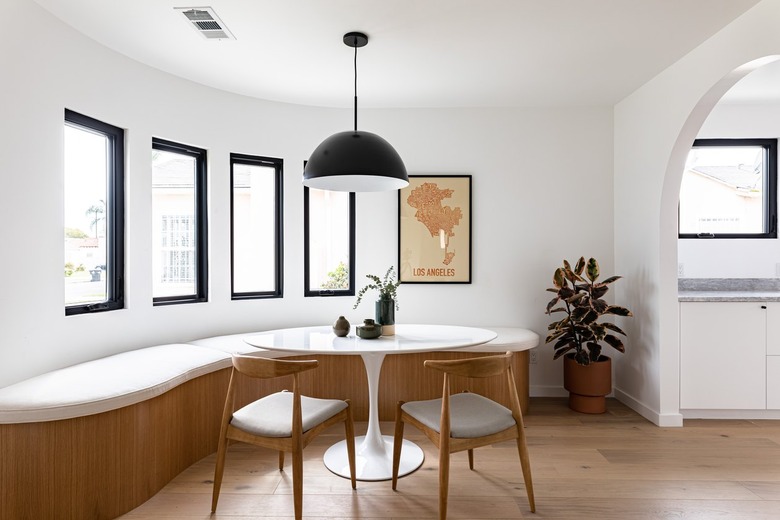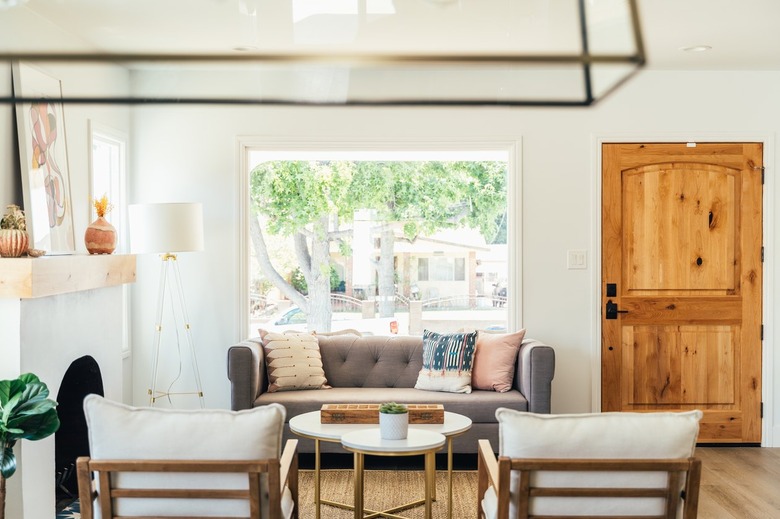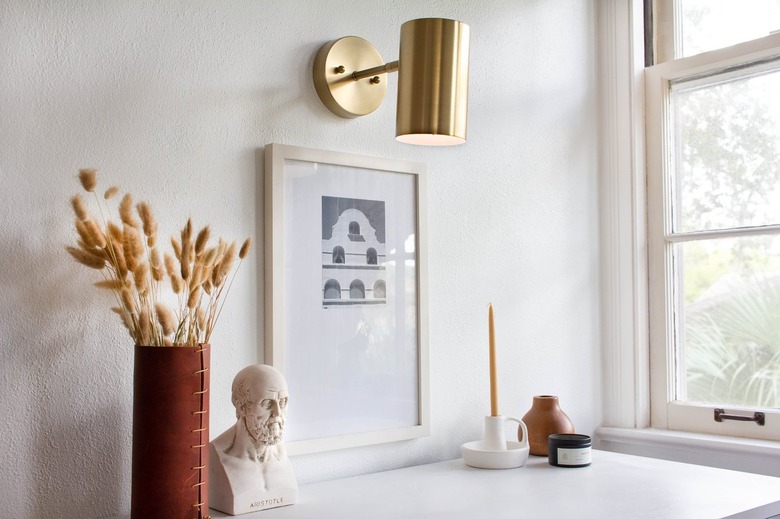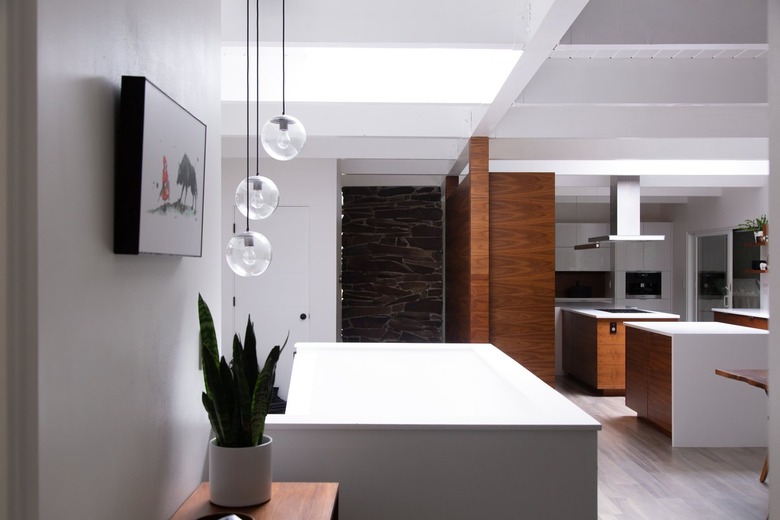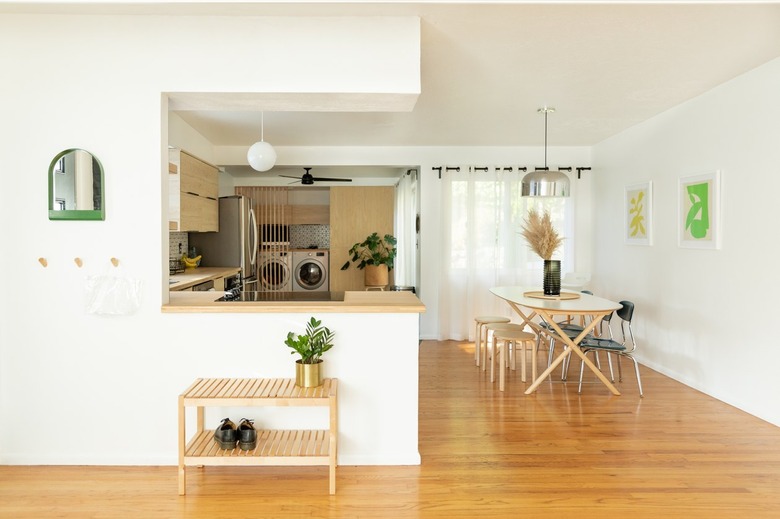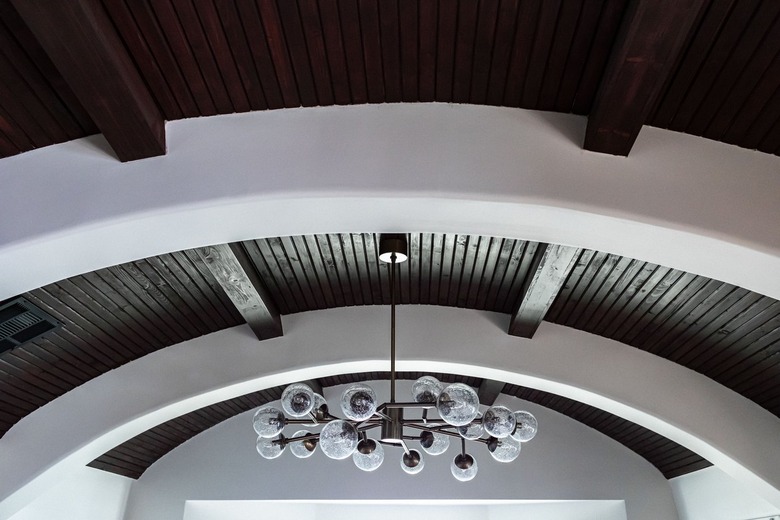Ambient Lighting, Task Lighting, And Accent Lighting: A DIY Guide
We may receive a commission on purchases made from links.
The irony of good lighting is that if it's done well, you probably won't notice it. Get it wrong, though, and the room may feel dingy or prove difficult to work in, even if there is a good amount of ambient lighting. Luckily, you don't need a pricey interior designer to get your lighting perfect. Just knowing a few basics can help you create a comfortable, inviting, and well-lit space.
What is Ambient Lighting?
What is Ambient Lighting?
Ambient lighting refers to the general lighting that brightens up a room. Its purpose is to spread an even light throughout the entire space. During the day, ambient lighting is often provided by natural light shining into your windows. As the sun goes down or the clouds roll in, however, you need a light source to supply ambient lighting. This is often done through fixtures and light bulbs that produce a warm, even glow.
The ambient lighting in a room allows you to see well enough to walk around without stubbing your toe on the furniture or accidentally stepping on a Lego (ouch). It also allows you to perform simple tasks, like folding the laundry or making the bed. When you're not doing chores, ambient lighting makes it easy to clearly see a friend who came over for a cup of coffee or to play a board game with your family.
You want to make sure you have sufficient ambient lighting in every room of your house since this is usually the type of light that comes on when you walk into a dark room and flip the light switch. Ambient lighting is also important over staircases to prevent tripping. Although ambient lighting is essential in your home, there are no hard and fast rules about how to add it to your space. Most ambient lighting comes from ceiling lights, but any fixture that spreads a warm glow over the entire room can do the job.
Task Lighting Defined
Task Lighting Defined
Task lighting is concentrated light that illuminates a certain area to allow you to better see what you're doing when working in a given space. Think of a table lamp on your desk or workspace — that's task lighting. Task lighting can help you see better and prevent eyestrain when reading, cooking, sewing, writing, cleaning, applying makeup, or performing other tasks where you need a bit more light than normal. Where exactly you need task lighting depends largely on how you use your home and where you perform certain tasks.
Generally, task lighting is necessary in kitchens, bathrooms, and home offices. In kitchens, task lighting is often installed under the cabinets and over the countertop where food is prepared. You may also want to hang some task lighting over the sink. Many people want task lighting in the bathroom, and you should consider adding a lamp next to your favorite armchair where you knit, read, cross stitch, or engage in other hobbies. If you like to read in bed at night, don't forget to add some task lighting there as well.
Essentially, getting task lighting right means sitting down and giving some thought to how you use your home.f Anywhere that you find yourself working is a good place to add task lighting. Choose clean, white bulbs when outfitting task lighting but avoid going so bright that you get a glare.
Know too that task lighting location matters. In a bathroom, for instance, wall sconces hung on either side of the mirror should hang at eye level. Fixtures hung above the mirror or vanity should rest about 7 feet above the floor. Make sure you position desk lamps and other task lighting in a way that they provide ample light without casting a shadow over the work surface.
Tip
For effective task lighting, it's important that your body does not come between your work and the light. Ceiling lights in the kitchen make poor task lights because your body creates a shadow on the countertop in front of you. Undercabinet lights solve this problem.
Accent Lighting Defined
Accent Lighting Defined
Accent lighting will make your space look amazing, but it's less critical than ambient or task lighting. Accent lighting is lighting that you use to highlight or showcase something special. You may use accent lighting to draw the eye to your favorite piece of art, a well-stocked bookcase, a collection on display, or anything else you deem special and important. Accent lighting can also add drama and sophistication to a room, as it does when installed over kitchen cabinets or under a bed frame.
Technically, you can skip the accent lighting, and many homeowners do. We argue that it's worth considering — accent lighting undeniably adds depth and style to a space. It is especially charming when used in living rooms, entryways, and the garden. Sometimes, ambient lighting creates a nice finishing touch in rooms that feel a little lacking without it.
Putting It All Together
Putting It All Together
Rome wasn't built in a day, and your lighting plan doesn't need to be either. Begin lighting your space by choosing fixtures to create ambient lighting first. This is likely the light you will use most often, and it forms the base for the rest of your lighting choices. Once you see how the ambient lighting illuminates your room, you can then more easily see where task and accent lighting might be necessary.
Next, you'll want to add your task lighting. Anywhere that you work and where ambient lighting doesn't shine brightly enough will need task lighting of some kind. If you've just moved into a new home or rearranged a room, you might want to live in the space for a while and add task lighting where you find yourself working. Sometimes, people find that they don't use a certain room exactly the way they thought they would.
Finally, you'll add any accent lighting if desired. Adding this last gives you the freedom to experiment with where you hang your artwork or place the curio cabinet that stores your favorite collection. Add accent lighting only when you're sure of the location of the items you want to accent.
Lighting Tips and Tricks
Lighting Tips and Tricks
Lighting can do more than simply illuminate a given space, and a few tips can help you use light to create some clever effects in your home.
- If you want your ceilings to look higher, use vertical lights, such as wall sconces, and hang pendant lights a little lower than you normally would. Going lower is a smart trick but make sure you don't go too low. The bottom of a pendant light or chandelier should always be at least 7 feet off the floor.
- Light will also make a room look bigger if you bounce it off the walls or ceiling. Light at least three corners of the room and make one side of the room a bit brighter than the other. When looking at ceiling lights, stick with flush-mount fixtures unless your ceiling is more than 10 feet tall.
- Be wary of popular lighting trends. Some looks, like pendants over the kitchen counter, are practical and timeless. Others are not. It's easy to remove a funky floor or table lamp if styles change, but permanently mounted lights aren't so easy to change. Recessed lighting was once very fashionable, for instance, and has since fallen out of vogue. It's still perfectly functional if you like it, but it may not be the best choice if you plan to sell your home in the foreseeable future.
- When planning what types of lighting you desire, remember to consider how you'll control it. A floor lamp, for example, may provide plenty of task and ambient lighting, but consider how you'll turn it off and on. If you have to walk into a dark room to reach the lamp, it may not be practical to use it for ambient lighting. You may also find that you want the ability to turn your bedroom light off from your bed. You could do this by putting a lamp on your bedside table or getting a ceiling light with a remote control.
You can also control Wi-Fi-enabled lights and bulbs by using an app on your phone. This makes it easy to turn on a light from your driveway if you come home to a dark house. You can also opt for motion-activated lights that turn themselves on and off when you enter or leave a space. The right lighting can be as convenient as it is practical.
